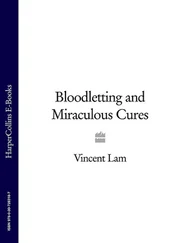Ethel Vincent - Newfoundland to Cochin China
Здесь есть возможность читать онлайн «Ethel Vincent - Newfoundland to Cochin China» — ознакомительный отрывок электронной книги совершенно бесплатно, а после прочтения отрывка купить полную версию. В некоторых случаях можно слушать аудио, скачать через торрент в формате fb2 и присутствует краткое содержание. Жанр: Путешествия и география, foreign_antique, foreign_prose, на английском языке. Описание произведения, (предисловие) а так же отзывы посетителей доступны на портале библиотеки ЛибКат.
- Название:Newfoundland to Cochin China
- Автор:
- Жанр:
- Год:неизвестен
- ISBN:нет данных
- Рейтинг книги:5 / 5. Голосов: 1
-
Избранное:Добавить в избранное
- Отзывы:
-
Ваша оценка:
- 100
- 1
- 2
- 3
- 4
- 5
Newfoundland to Cochin China: краткое содержание, описание и аннотация
Предлагаем к чтению аннотацию, описание, краткое содержание или предисловие (зависит от того, что написал сам автор книги «Newfoundland to Cochin China»). Если вы не нашли необходимую информацию о книге — напишите в комментариях, мы постараемся отыскать её.
Newfoundland to Cochin China — читать онлайн ознакомительный отрывок
Ниже представлен текст книги, разбитый по страницам. Система сохранения места последней прочитанной страницы, позволяет с удобством читать онлайн бесплатно книгу «Newfoundland to Cochin China», без необходимости каждый раз заново искать на чём Вы остановились. Поставьте закладку, и сможете в любой момент перейти на страницу, на которой закончили чтение.
Интервал:
Закладка:
Thursday, Aug. 6th. —We awoke to a lovely spring morning, with the breeze whispering amongst the trees, and the Union Jack flapping gently against the flagstaff in Government House garden. Spring has just come. Asparagus and peas are coming up in the garden, strawberries are ripening and the hay is ready to cut. We have gone back three months in our season. The climate of Newfoundland is abominable. The winter is interminably long and severe, lasting from the beginning of October to May. There are incessant fogs, which envelop everything in a cold damp pall.
Nor is the island exempt from these fogs even during its short summer. The climate is also subject to extreme and rapid changes, from heat to cold, in a few hours. The summer has been unusually delayed this year, and had we come three weeks earlier, we should have seen an iceberg in the middle of the harbour.
Newfoundland is about the size of Ireland, or one-third more. Its population is some 200,000, but of this number 28,000 live at St. John's, which is therefore the centre of all life, commercial, political and social. The remainder of the population is chiefly settled on the coast, in fishing villages called the "Out-ports", whilst the interior of the island is sparsely settled, and in some parts unexplored. The population is dwindling, and there is no immigration, of which they are jealous, as reducing the means already deficient of living, but there is emigration to Canada and the United States.
The people are of English, Scotch and Irish descent, but those from England are chiefly from the west coast and Devonshire. The Premier, Sir William Whiteway, is a Devonian. And a curious little fact exemplifies this. If you ask for cream, it is always Devonshire clotted cream that is brought.
Newfoundland was the first of England's colonial possessions. Sebastian Cabot discovered the island in 1497, and claimed it for Henry VII. With the discovery of America, all nations came forward to claim a share, but it was England and France who chiefly engaged in the fisheries, which were then a source of great wealth. Sir Gilbert Humphrey and Sir Walter Raleigh annexed the island for Queen Elizabeth. Even at that time 100,000 l. worth of fish were annually exported. The ships left England in March, and returned in September, and these voyages formed a nursery for English seamen. In 1635 the French obtained permission from England to dry fish on the shores of Newfoundland. This may be said to have laid the beginning of the troubles which are now so active. The island was kept in a deserted condition by the merchant adventurers up to 1729. They persuaded the authorities at home that it was uninhabitable, in order that they might retain the fishing rights in their own hands. Masters of vessels were obliged to bring back to England each soul they embarked, under penalty of 100 l. When at length this tyranny gave way, a governor sent from England, and the island colonized, the fishermen were still so poor as to be in complete subjection to the merchants under the "supplying system." This baneful "truck" practice begun so long ago, continues in use unto this day, with equally evil results. The only support of the fishermen (who form the bulk of the population) is fish. Upon the result of the fishing season the year's comfort and prosperity depend. But this, to be done on a profitable scale, requires a considerable plant. There are only three classes in Newfoundland: the merchants, the planters, and the fishermen. The last class are in durance to the first, through the medium of the planter. The planter obtains from the merchant the necessary outfit for the fishermen in clothes and goods, and this is sold on credit. On his return from the fisheries (the chief of which are off the Great Bank), he seizes the catch and repays himself, and the merchant, who disposes of the fish. Thus the fishermen are kept in a hopelessly poor and dependent position.
Of course, since our arrival, we have heard every side of this much-vexed Fishery Question. But at least we can now fully understand the "life-and-death" importance of the question to the island, of the curtailment of their fishery grounds by the French shore dispute. The life of the codfish and lobster is the life of the Newfoundlanders, and to lessen their catch of fish is to lower proportionately their already low standard of living. The question of the French obtaining bait and erecting lobster factories is discussed at every dinner table. Mr. Baird, by defying Sir Baldwin Walker, is called the village Hampden. They feel deeply the apparent want of sympathy of the Home Government, and indeed it cannot be easy for Her Majesty's Ministers to understand the vital interests involved in this dispute to the islanders without a personal visit to St. John's.
We should like to have visited the disputed fishing shore off the islands of St. Pierre and Miquelon, but it lies 135 miles down the coast, and the only means of communication is by a fishing schooner.
We went sight-seeing in St. John's in the morning. Our first visit was to the adjacent square stone building, the House of Assembly. It is a miniature House of Commons, contained in a lofty room, with long windows. There is the Speaker's chair, the table, the ministerial and opposition benches, though the latter are only occupied by the eight members in opposition, whilst the ministerial benches boast a cohort of twenty-six, of whom all but two are said to be in receipt of an official salary. There is also a Legislative Council, or Upper House; and an Executive Council, or Cabinet, which meets weekly at Government House.
Sir William Whiteway, the Premier, returns by the next steamer from the Delegation to England, but his colleagues are here, and we meet them all.
The Roman Catholic cathedral is the next most prominent building at St. John's. Its situation on a plateau high above the town, and facing the harbour, tells in its favour. Inside the railed-off square there are four beautiful marble statues. The Cathedral is finely proportioned inside, and over the high altar there is a fine bas-relief representation of the Dying Christ. The more you travel, the more struck you are with the activity of the Church of Rome in all parts of the world, and particularly in the Colonies. We found it so in Australia and New Zealand. In Eastern and Central Canada the finest buildings in the cities are the Roman Catholic cathedrals. So it is at Ottawa, at Montreal (where they are building one with a dome after the model of St. Peter's), and at Halifax. Here it is the same. One wonders whence the money comes, and whether it is true that the Roman Catholics, with no State endowment, are more generous in the support of their religion than us Protestants. We visited Bishop Power, for we hold a circular autograph letter from Cardinal Manning (my husband's godfather, now gone to his rest), written in Latin, and addressed to all the Archbishops, Bishops and Clergy of the Roman hierarchy in all parts of the globe. It ensures us a welcome from them everywhere.
We then went to the English cathedral, which lies lower down in the city, and is a fine Gothic structure designed by Sir Gilbert Scott, but it presents a sorry contrast to the other, as there is a blank where the tower should be, and, save for a few stained glass windows, it is bare and undecorated. There is a heavy debt of 20,000 l. on the cathedral, to meet which several public-spirited gentlemen have banded together and insured their lives in its favour. They feel that they have made sufficient sacrifices, and that having built the fabric, it must be left to their sons to decorate it.
Then we descended to Water Street. It is the principal street, lying parallel with the harbour, and a somewhat untidy and unsavoury avenue. It is a real descent to reach it, for the other streets climb up from it at right angles, and each one is a mountain to ascend. There is one cab-stand here for the whole town. The vehicles on it are of antiquated date, the seat for the driver dovetailing into a back seat for a passenger. There are frequent stand pipes ready for the fire brigade, who have stations with the horses standing ready under suspended collars, and all the new improvements. The pressure of water is so good that, with hoses attached, the jets will pass over the cathedral. Thrice already destroyed by fire, St. John's now takes all human precautions. There are several banks, a fine hotel, from without at least, but which is said to defeat its exterior promise inside, a general hospital, penitentiary, orphanages, sailors' homes, and a technical and high school. The education of the island is in a far advanced state, with compulsory and free education. The museum in the post office contains specimens of the marble, coal and gypsum found in the island. Newfoundland is rich in mineral wealth, and only requires capital for its development.
Читать дальшеИнтервал:
Закладка:
Похожие книги на «Newfoundland to Cochin China»
Представляем Вашему вниманию похожие книги на «Newfoundland to Cochin China» списком для выбора. Мы отобрали схожую по названию и смыслу литературу в надежде предоставить читателям больше вариантов отыскать новые, интересные, ещё непрочитанные произведения.
Обсуждение, отзывы о книге «Newfoundland to Cochin China» и просто собственные мнения читателей. Оставьте ваши комментарии, напишите, что Вы думаете о произведении, его смысле или главных героях. Укажите что конкретно понравилось, а что нет, и почему Вы так считаете.












